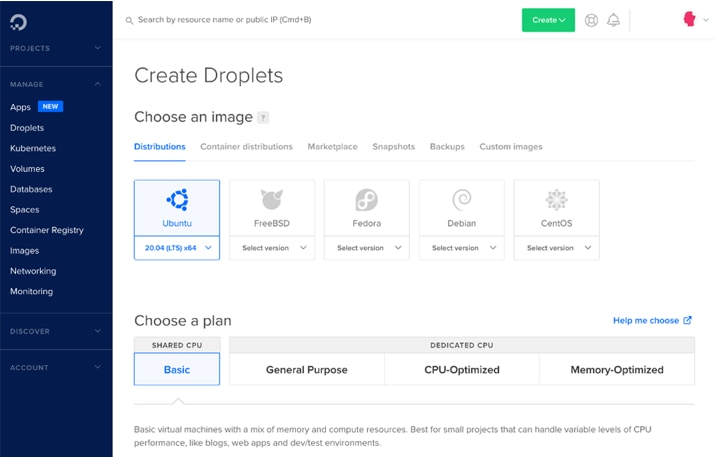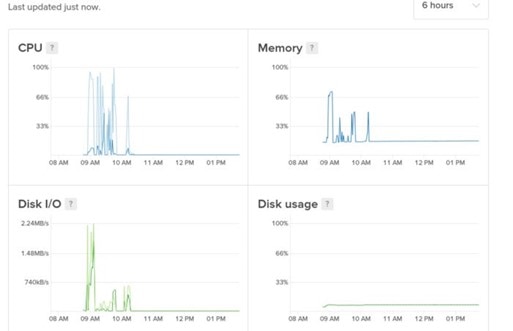What Is DigitalOcean?
DigitalOcean is an Infrastructure-as-a-Service (IaaS) provider that introduced an application Platform-as-a-Service (PaaS) offering. Unlike strictly PaaS providers—such as Google App Engine or Heroku—DigitalOcean provides users with access to the underlying virtual machines that support their applications. Users can configure the disk space, memory allocation, networking settings, operating system, and more to best meet the needs of their application.

DigitalOcean is frequently referred to as “the developer cloud” due to its wide range of compute, storage, database, and networking offerings that developers can utilize to build and run scalable, high-performance applications. DigitalOcean has a reputation for being both an early adopter of new technology—such as solid-state drive (SSD)-based virtual machines and IPv6—and an active contributor to the open-source community.
In 2020, DigitalOcean released its PaaS offering App Platform, which is built on Kubernetes and open standards and uses the DigitalOcean cloud infrastructure. Since DigitalOcean offers both IaaS and PaaS solutions, it provides users with more flexibility in how they want to scale their applications, either via a fully managed scaling mechanism or by more directly controlling the infrastructure configuration.
DigitalOcean Features
From its origin as an IaaS platform based on SSDs, DigitalOcean has maintained its focus on speed and performance. Its Linux-based virtual machines, known as Droplets, offer fast boot times. Digital Ocean runs Droplets on modern Intel or AMD CPUs (with Premium CPU options) and NVMe SSD–backed storage with higher network throughput, providing fast, reliable performance for VM workloads and for services built on the App Platform.
Developers describe DigitalOcean as easy to use. Much of this comes from its uncluttered user interface, which is optimized to provide access to the functions a developer would need without complicating it with unnecessary links or buttons. The APIs DigitalOcean provides are straightforward and can be invoked by standard HTTP tools. DigitalOcean also offers a well-documented HTTP API, doctl CLI, official client libraries (e.g., Python pydo, Ruby DropletKit), and numerous community libraries.
The DigitalOcean documentation adds to the simplicity with abundant tutorials, installation guides, how-to guides, and walkthroughs. The documentation isn’t limited to DigitalOcean-specific topics but extends into general cloud platform and technology areas. DigitalOcean also features an active digital community, which responds to queries and can assist with the adoption of cutting-edge technologies.
Monitoring in DigitalOcean
DigitalOcean offers integrated infrastructure monitoring designed to collect system-level metrics using an open-source agent. By opting into the free monitoring service, users can access the control panel to view graphs, track performance, configure metrics, and set alert policies. Monitoring can also be enabled via an API.

Adding SolarWinds Papertrail to DigitalOcean
The monitoring options in DigitalOcean provide a high-level view of Droplet performance and can be an essential tool when troubleshooting an incident. In terms of application-level logging and monitoring, DigitalOcean relies on third-party solutions such as SolarWinds Papertrail. Users can search for and enable third-party add-ons in the DigitalOcean Marketplace.
SolarWinds Papertrail is an easy-to-use log management solution built to aggregate log data from multiple applications and systems, allowing users to search all logs from a single search bar. With full-text search and support for almost every log source, SolarWinds Papertrail features the ability to view, pause, and search live event data. SolarWinds Papertrail complements the infrastructure-level monitoring provided by DigitalOcean by extending visibility to the application level.
Sign up for a free trial and try it out for yourself!
Check out these articles for more information on using SolarWinds Papertrail with DigitalOcean: